In this type of question, one key figure is followed by four alternatives. Among these alternatives, only one figure has all components of the key figure to find out this correct alternative.






Important Questions on Analysing Patterns
What is the area of the base of the given figure(cuboid), where the distance between dots is unit?
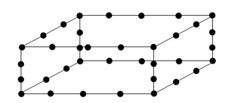
Which among the answer figures will be in place of ‘?’ in the question figure?
Question figures

From the given answer figures, select the one in which the question figure is hidden/embedded. (Rotation is not allowed)

Which figure is the rearrangement of the parts of the given figure?

Find the odd one out.

Which figure is the rearrangement of the parts of the given figure?
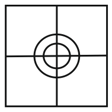
Choose the set of the figure which follows the given rule.
Rule: Closed figures gradually become open and open figures gradually become closed.
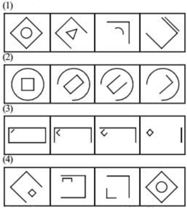
Find the missing term ‘?’ in the given figure.
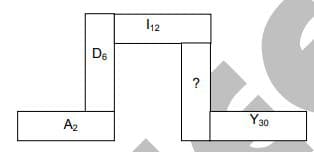
Select the option that will replace the question mark (?)
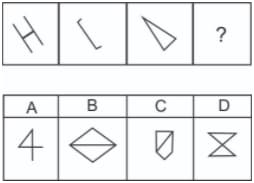
In the figures given below identify the figure that is different from the rest.

Which figure is the rearrangement of the parts of the given figure ?

In order to make the figure given below, the cut of which option figure on a transparent sheet has been used?
Question figure:
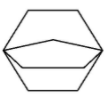
Option figures:

The question was wrong and has been corrected.
Complete the given figure analogy by choosing the correct answer from the given alternatives.

The given picture below depicts the work of Dutch artist. Theo van Doesburg's "Counter-Composition" designed in .
Identify the rotated version of the original composition from the choices given below.
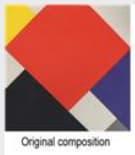
Complete the given figure analogy by choosing the correct answer from the given alternatives.

Which answer figure can be drawn from both the figures given in the question
Question Figure :

Which option figure shows greatest similarity with the question figure?

Select the pattern from the below given option that resembles closest to :



